in memorium
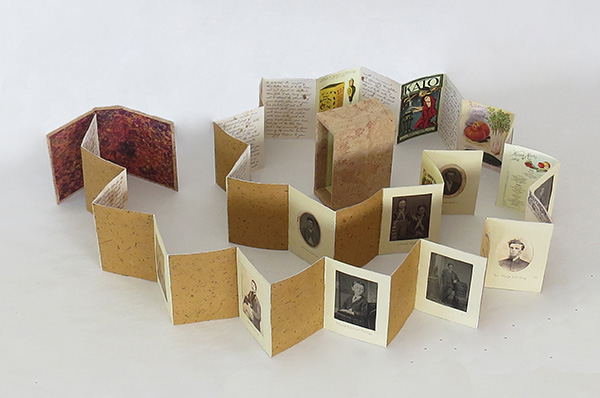 My father was involved in genealogy for many years. After he passed away I was going through his things and came across a soft piece of cotton cloth wrapped around a collection of tintypes and dry plates. Although most of the photographs were unidentified, these were obviously all relatives of mine. The photos dated from about 1865 to around 1885. I took the bundle home, where it sat neglected on a shelf for many years. Guilt eventually got the better of me: I decided to pay tribute to these mostly unidentified kin, to acknowledge their joys and sorrows, their times of success and prosperity and their times hardship.
My father was involved in genealogy for many years. After he passed away I was going through his things and came across a soft piece of cotton cloth wrapped around a collection of tintypes and dry plates. Although most of the photographs were unidentified, these were obviously all relatives of mine. The photos dated from about 1865 to around 1885. I took the bundle home, where it sat neglected on a shelf for many years. Guilt eventually got the better of me: I decided to pay tribute to these mostly unidentified kin, to acknowledge their joys and sorrows, their times of success and prosperity and their times hardship.I decided to make an accordion-folded book with the photographs on one side. Using hand-set lead type (Greeting Monotone font) I identified each relative. Here are some sample spreads...
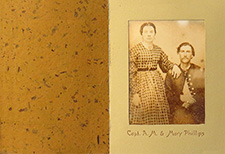 |
|
| Capt. A.M. and Mary Phillips | |
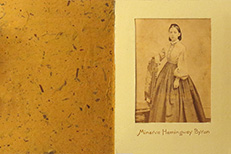 |
|
| Minerva Hemingway Byron | |
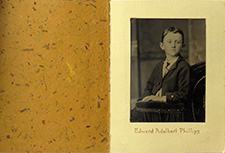 |
|
| Edward Adelbert Phillips | |
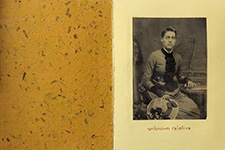 |
|
| unknown relative | |
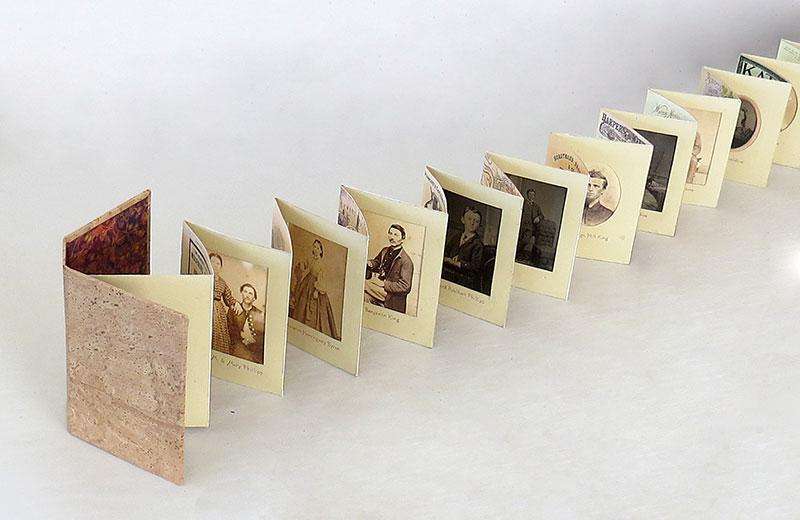
On the other side are two letters that my father collected while doing his genealogical research. One is a letter from my great-great grandfather Gideon Ellis to my grandfather Ben Phillips and his cousin Mort. Written in 1898 the letter captures the exuberance and optimism of the times, and the sense of humor that was so valued on the Phillips/Ellis side of my family. The letter begins...
Big Mining Deal
Gideon Ellis, who is at present at Colorado Springs, Colo. is trying to interest his two grandsons, Ben Phillips and Mort Dunlap, aged two and five years, respectively, in a big deal at Cripple Creek and writes the following to Ben, who has already made several successful land deals.
The letter concludes...
Take the 7:30 train to Delmar, board the Colorado Special and you will be here the next day. I will be at the depot, but you must not recognize me, as the police are on! We will go to Cripple Creek in a private conveyance and let the old folks at home whistle. Bring “Cooney” and “Sport,” also a good big Winchester, skinning knives, picks, drills, dirk knives, lots of tobacco, pipes, quinine, Dover’s powders, and a few flasks of old peach brandy stuck down in your overcoat pockets would serve as ballast and might add materially to the gravity of the occasion. Put on your best togs, get heavy-soled, long-legged boots and each a light-colored stovepipe hat. People here may think that Dewey and Samson have come.
Yours in Secrecy
Gideon Ellis
The first spread of the 1898 letter from my great-great grandfather to my grandfather. I used instant coffee to age the paper. The font is Emily Austin from Three Islands Press. (Click here for the complete transcript of the letter.)
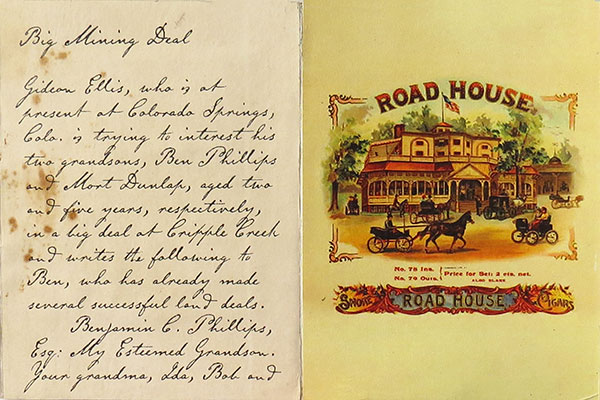
I used advertising and catalog covers from 1898 to capture the exhuberance of that period.
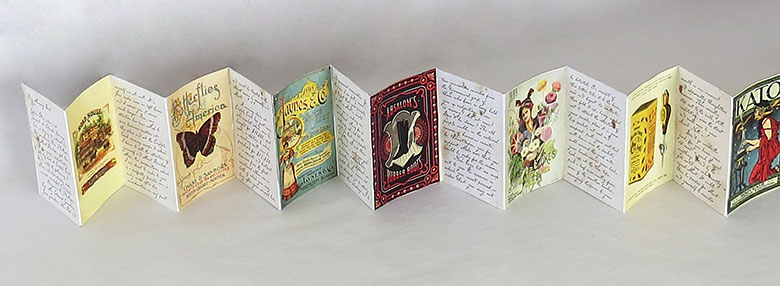
The 1898 letter represents joy, happiness, prosperity and contentment. I also wanted to capture the opposite suite of emotions in this family tribute: sadness, dispair, loneliness. To do this I used a letter written in 1862 by Jacob Ellis to his brother Gideon (my great-great uncle and great-great grandfather respectively). Jacob had enlisted in the Civil War August 5, 1862 in Company K, 24th Inf. Reg. from Jones County Iowa. He was 17 years old at the time and had never been away from home before his enlistment. Here are some excerpts from his letter.
This is a lonesom evening for me...I've been looking at the moon thinking while viewing its golden color that the eyes of those who I think so much of were viewing the same. Nothing looks as good as home...Gid when I think of the chance I stand to never get back I tell you it brings no very plesant thoughts over me ...
Jacob died of Typhoid fever in a camp in Helena, Arkansas a year later, never having returned to his beloved family in Iowa again. He was only 18 years old.
I used advertisements, maps, political cartoons and other graphics from Harper's Weekly to accompany the 1862 letter. Harper's Weekly was the most widely read journal in the United States throughout the period of the Civil War.
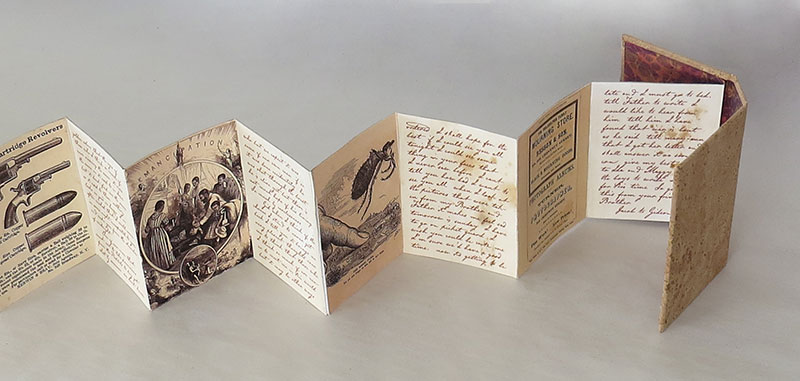
I used hand-marbled paper from Claire Guillot in France for the endpapers. I used natural cork for the book case and slipcover. The completed book...
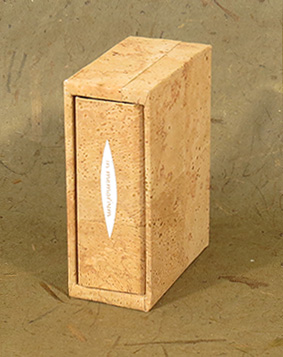
« back to BOOK ARTS